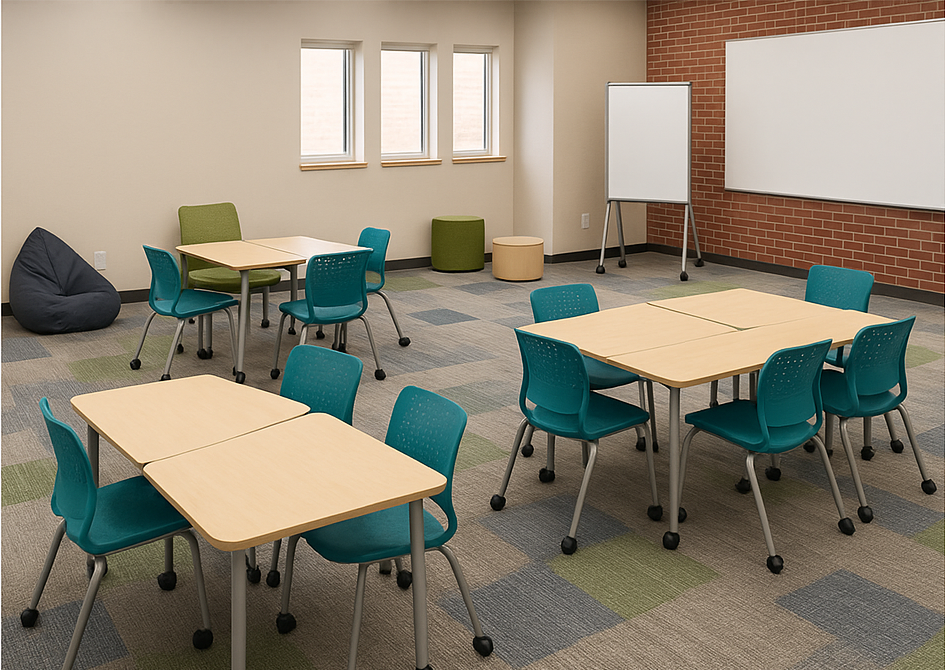Rethinking classroom design to match how students actually learn.
Not too long ago, a classroom meant one thing: rows of desks, a blackboard, and a teacher up front. Everything was fixed. You sat, you listened, you didn’t move unless you were asked to. But as teaching evolves, so must the spaces where learning happens.
Today’s schools are slowly tearing down the invisible walls of “one-size-fits-all” classrooms—and it’s changing everything.
What’s a Flexible Learning Space?
Think of a room where:
- Desks roll and reconfigure in seconds.
- There are corners for quiet reading, collaboration, or even just thinking.
- Students sit on cushions, stools, or maybe no chairs at all.
- There’s whiteboard paint on walls—or even on tables.
It’s not chaos. It’s choice.
Why It Works
Not all students focus the same way. Some need quiet. Some thrive in groups. Others like to move while they think. Flexible spaces adapt to the activity and the learner, not the other way around.
A group project? Move the tables together. Independent writing? Spread out into corners. Need a quick class circle? Chairs roll easily.
Real Impact, Real Fast
Schools trying these setups are reporting:
- Improved participation, especially from quieter students.
- Higher energy levels without the burnout.
- More peer-to-peer learning, since space allows for it.
- Teachers feel more connected, not just stuck at the front.
One teacher shared:
“It’s no longer me vs. them. We’re all part of the same flow.”
It’s Not About Fancy Furniture
You don’t need a budget-busting renovation. Start small:
- Rearrange desks weekly.
- Use chalkboard paint on a wall.
- Create a reading nook with floor cushions.
- Let students choose where they sit.
The message is simple: the space tells students what kind of learning is welcome. When that message is “you belong, and your way of learning matters,” engagement rises.
Let’s Think Beyond the Walls
Education isn’t static—why should classrooms be?
Flexible learning spaces give students room to move, think, explore, and connect. And when students feel like the space belongs to them, their learning does too.

Comments are closed